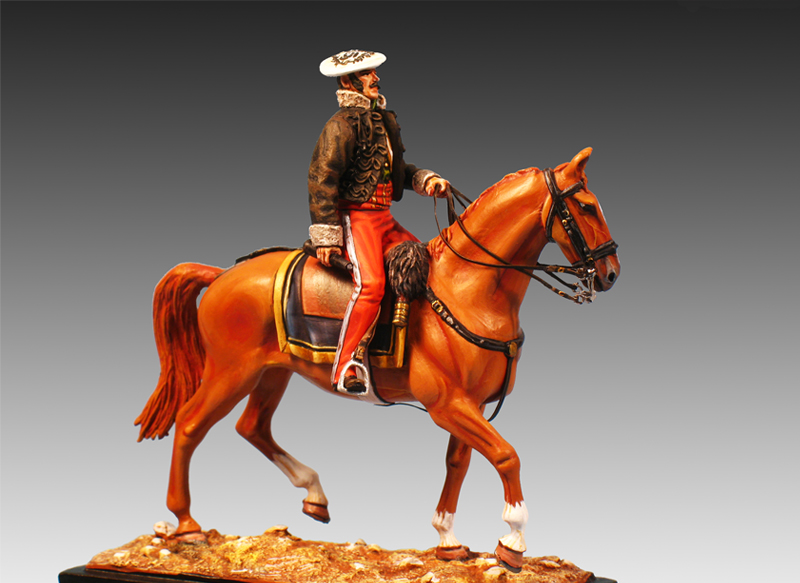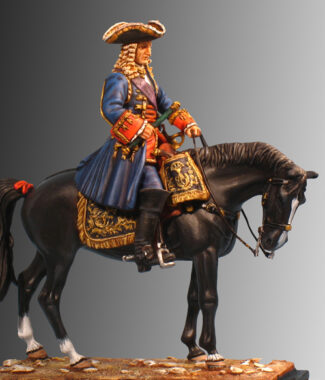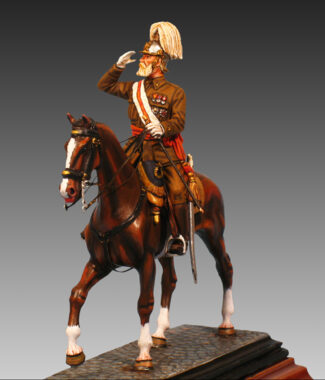In retaliation for the death of two Christian mayors of the Alcañiz region, General Nogueras shot Cabrera’s mother, Ana María Griñó, on February 16, 1836 in Tortosa, a fact that had a great impact on Europe and contributed to hardening even more war in the Maestrazgo. In autumn of 1836 he accompanied Gomez on his expedition through territories of La Mancha, Andalusia and Extremadura and the following year, joining the troops that departed from the North, he participated in the Royal Expedition.
After his victory in Maella in October 1838, he was appointed lieutenant general and count of Morella. Cabrera came to organize a small state with capital in Morella, which was the center of Carlist activity.
In 1839, he did not accept the Bergara Agreement, withdrew with his army to the north of Catalonia and after a last resistance in Berga he went to France in July 1840, which ended the First Carlist War.
Six years later, at the start of the “matiners” war, he was appointed by Carlos VI, supreme head of the Carlist forces in Aragon, Catalonia, Valencia and Murcia. In 1848 he entered Catalonia to lead the Carlist troops, organizing an army of about 9,000 men. In January 1849 he won the title of Marquis del Ter for his performance in the fighting of Amer and El Pasteral, where he was injured. But three months later he had to return to France, because the war did not take root outside of Catalonia and because of the great superiority of government forces, establishing his residence in England.
In 1850 he married Marian Katherine Richards, an English and Anglican lady of high society, who had a good fortune. His move away from the Carlist exile centres eventually brought him closer to moderate and more liberal ideas.
Charles VII offered him the supreme military leadership of the third Carlist uprising, but Cabrera rejected the offer and refused to participate in another civil war. In 1875, he recognized Alfonso XII as the legitimate king and on August 21, the latter named him Captain General of the Army and recognized all the titles and honors obtained in the battlefields.
Ramón Cabrera died in England on 24 May 1877.
Given the short time between the first and second Carlist Wars, it makes us think that Ramón Cabrera’s uniform would have undergone few changes. Felix Maria Vincenz Andreas, prince of Lichnowsky, Austrian adventurer and military who enlisted on the Carlist side in the First War, reaching the rank of general, describes Cabrera – who rarely wore the general’s uniform – as follows: white beret, dark green short jacket; wolfskin fur, with collar and cuffs of light gray astrakhan; Scarlet pants with silver stripe. According to the author cited, Cabrera never used a sword or saber (it should not be forgotten that Cabrera lacked military training), sometimes he carried a saber hanging from the chair but never at the waist. In the front frame of the same used to carry two long guns with covers lined with wolf skin. The incarnate girdle and the band would be that of great Marshal. For the figure we have maintained this uniform. The beret on this occasion (whose original is preserved in the Army Museum in Toledo) has replaced the golden tassel, with a black embroidery with the anagram of Carlos VI. The shabrack, which lacks any badge, is dark blue with a golden edge and gold chevron.








Reviews
There are no reviews yet.